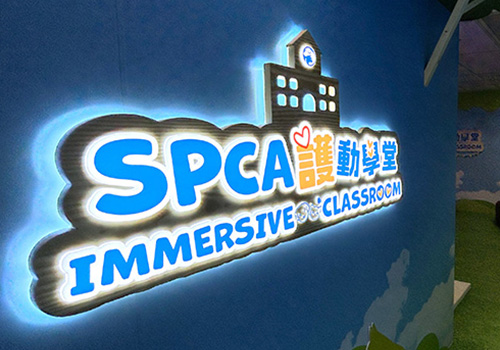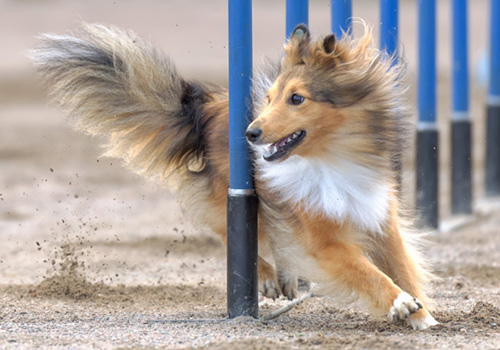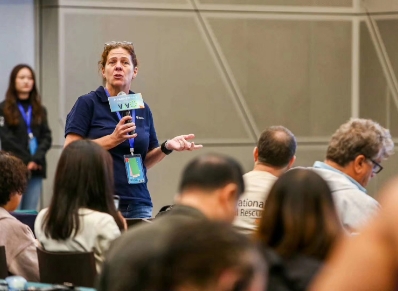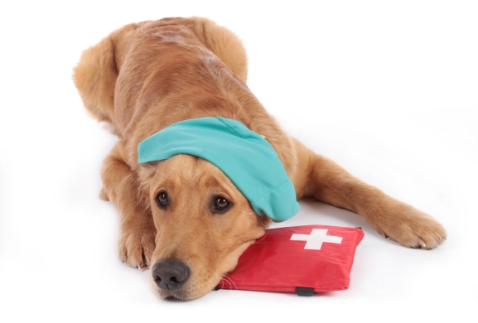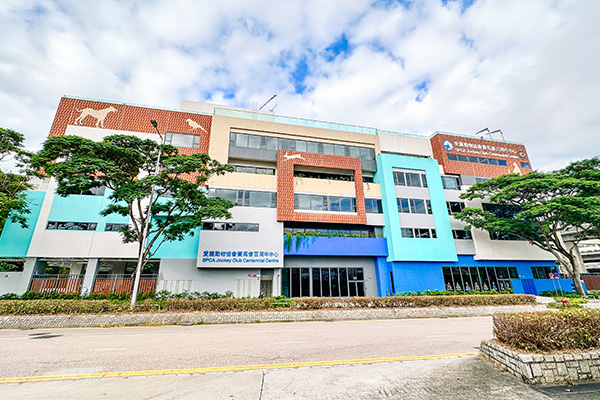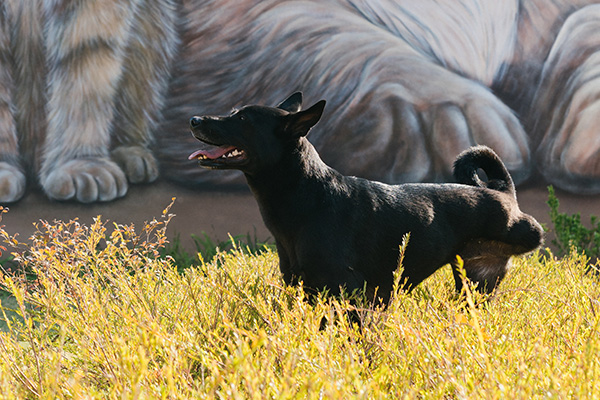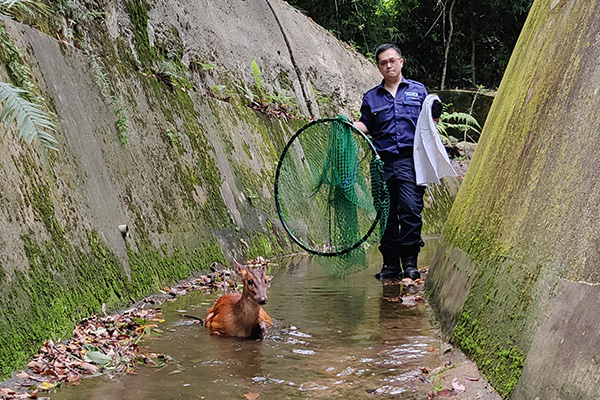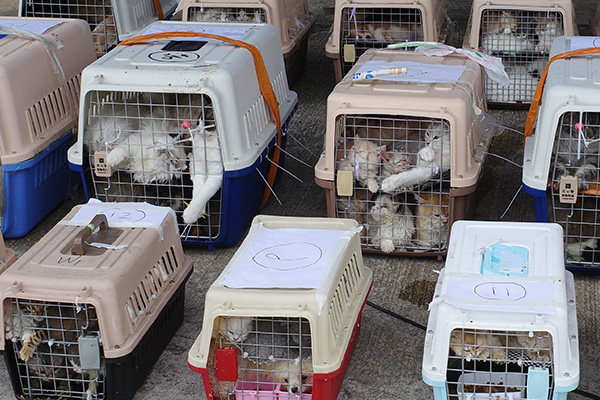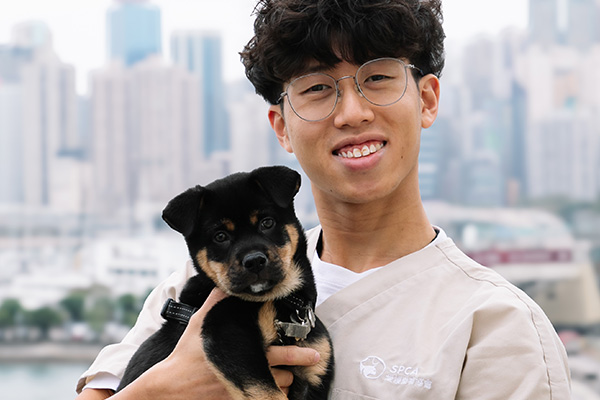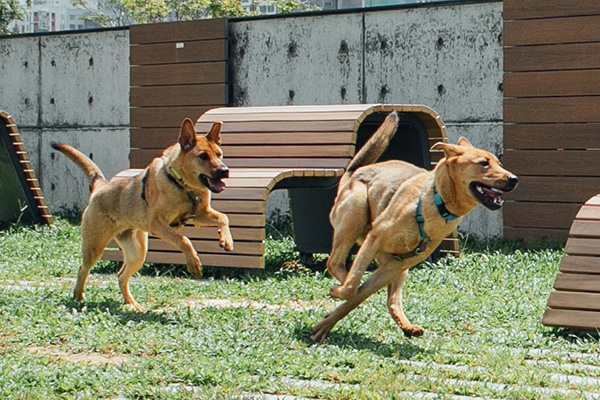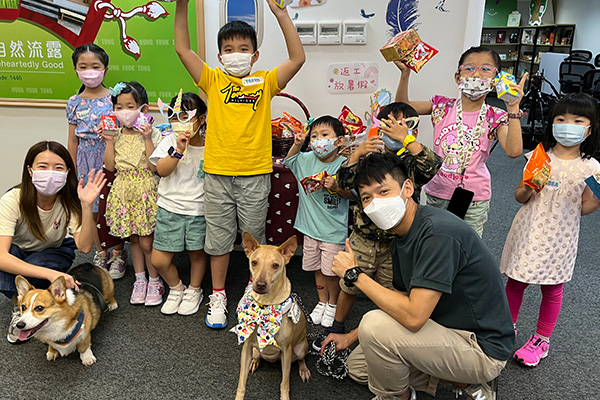When Breeding Goes Bad –
Corrective Surgeries
Contributed by the SPCA Chief Veterinary Surgeon Dr. Jane Gray and the Vet Department
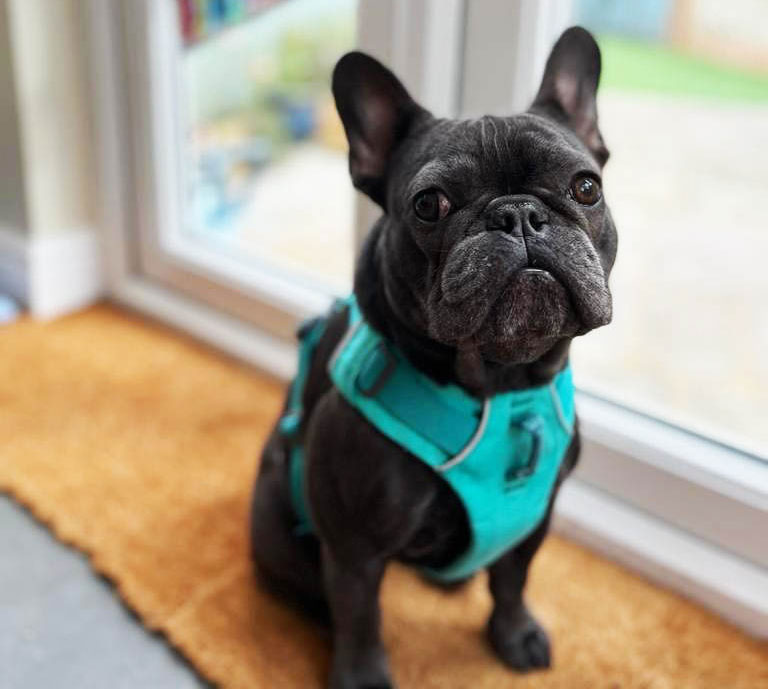
Our vets performed stenotic nares corrective surgery on Bao (above), a French bulldog with BOAS symptoms, so she could fly with her owner to start a new life in another country.
Selective breeding over the years for certain “looks” has resulted in an increase in the number of genetic problems seen by our veterinary surgeons. Unfortunately, it is a very sad fact that these in-bred traits have a negative impact on the quality of life of those affected. Some conditions can be managed without surgical intervention, however, all too often corrective surgeries need to be performed to prevent associated complications and/or chronic disease.
Here are some of the common conditions seen at the SPCA which can be alleviated/improved by surgery:
Breathing Difficulties
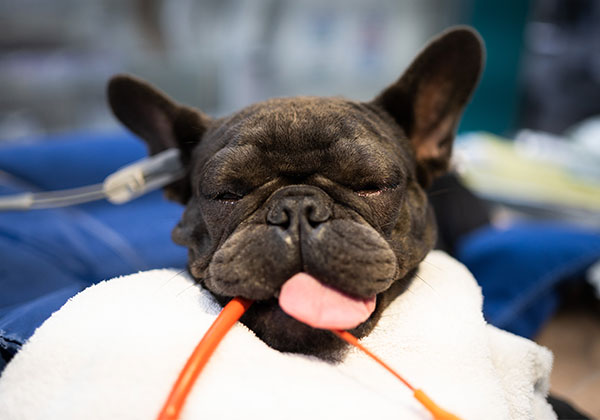
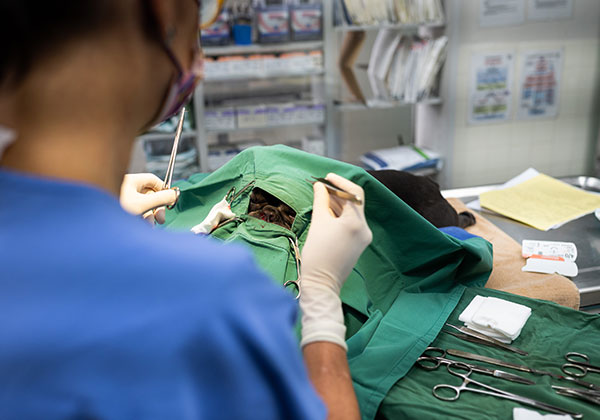
Breathing issues are most commonly seen in brachycephalic or “flat-faced” pets. Selective breeding for “short snouts” has led to a number of anatomical problems, such as stenotic nares (narrow nostrils), an elongated soft palate (the presence of excessive tissue at the back of the throat), an enlarged tongue and narrowing and/or collapsing of the trachea (windpipe).
These abnormalities restrict airflow and manifest as laboured breathing, abnormal or increased respiratory noise, exercise intolerance, and in severe cases, cyanosis and fainting. This is the reason why many airlines have banned flat-faced breeds in recent years.
The overall term for this condition is Brachycephalic Obstructive Airway Syndrome (BOAS) and is commonly seen in Pugs, Bulldogs, Pekingese and Boston Terriers. However, this syndrome is not limited to dogs, as it also affects cats with flat faces, such as Exotic Shorthairs, Himalayans and Persians.
Surgical correction can involve widening stenotic nostrils, trimming down the elongated soft palate, and in severe cases correction of tracheal deformities. Though required to prevent issues further in life, these surgeries are not without danger, especially as these breeds are also known to have a higher anaesthetic risk.
Ear Problems
Due to genetically acquired stenotic ear canals, certain breeds can be more prone to ear infections and chronic pain. This is because narrowing of the ear canals results in poor air circulation and increased humidity, predisposing to inflammation and infection. This in turn leads to a build-up of discharge and a vicious circle of chronic disease and suffering unless the infection and inflammation are controlled. The ear canals can become so thickened and narrowed that even attempting a gentle clean is impossible.
This issue can be seen in a wide variety of breeds but especially the Shar Pei, and certain breeds of cat notably, Scottish Folds and American Curls.
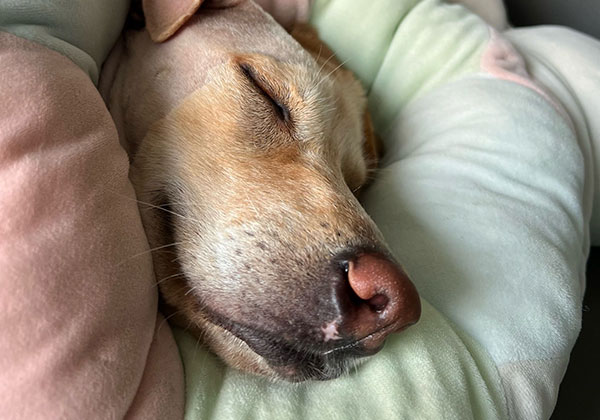
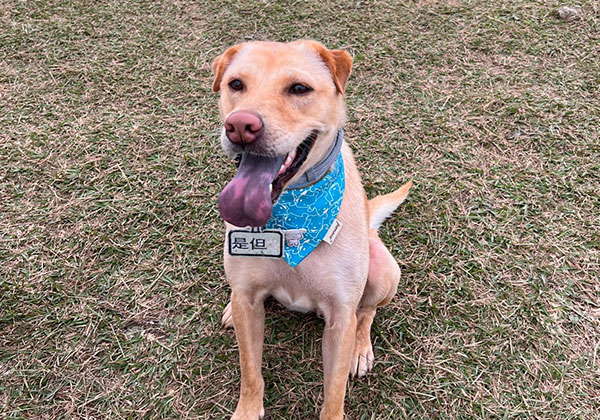
Si Dan, a Sharpei mix, underwent corrective surgery on the outer wall of her ear canals to open the ear canal for better aeration and cleaning.
In severe cases, the only way to prevent chronic disease and suffering is to perform surgery, the actual type depending on the severity of the condition. The extent of surgery can range from removing the outside wall of the vertical ear canal (Lateral Wall resection), to removing the whole vertical ear canal (Vertical Canal Ablation). Both procedures open up the ear canal, to allow for aeration and cleaning, with the aim to prevent further inflammation and infection.
In very severe cases, the whole ear canal (vertical and horizontal) may need to be removed (Total Ear Canal Ablation, TECA). After this surgery, there is no longer an external ear canal opening, so hopefully nothing to get infected and cause pain.
Other conditions that can be helped with corrective surgeries include:
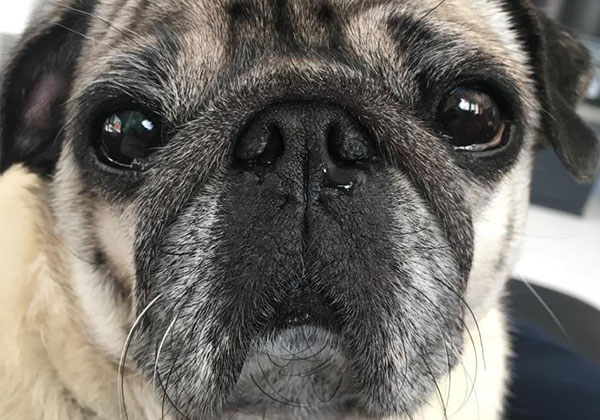
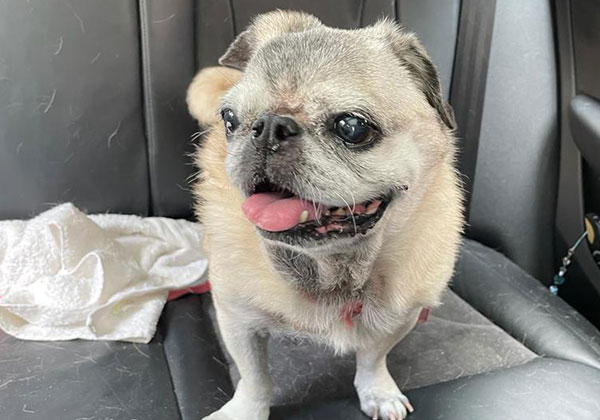
Coco, a Pug who used to suffer from skin fold dermatitis (left: before surgery), had a “face-lift” surgery to remove her excessive skin folds (right: after surgery).
We are very fortunate that corrective surgeries are available to help improve the quality of life of our affected pets, if they are unlucky enough to be born with one of these genetic issues. However, in an ideal world, these issues could be eliminated by breeding which promotes health and happiness instead of a certain look!
We hope that by educating the public regarding these welfare issues, we can together improve breeding standards by lobbying for improved breeding controls.
And of course, don’t forget to spread the message encouraging pet lovers to adopt, not shop!
Scan to find your closest clinic and book a consultation with our vets today:

